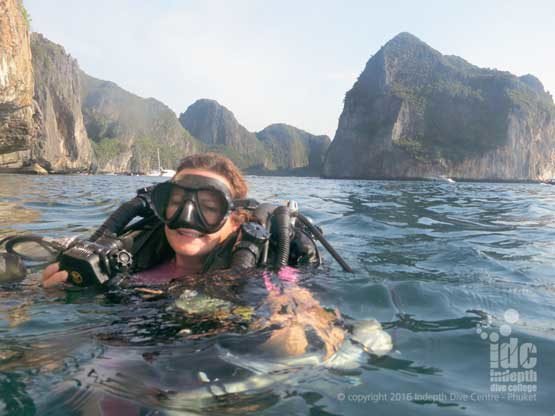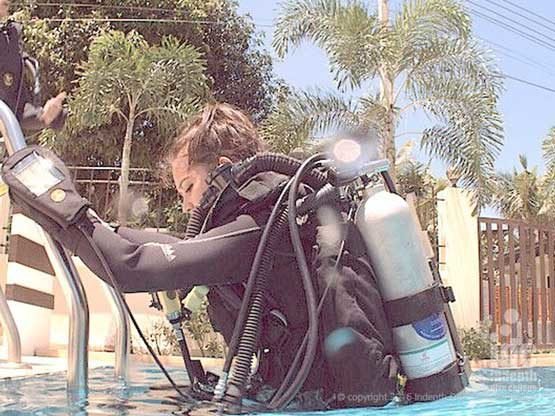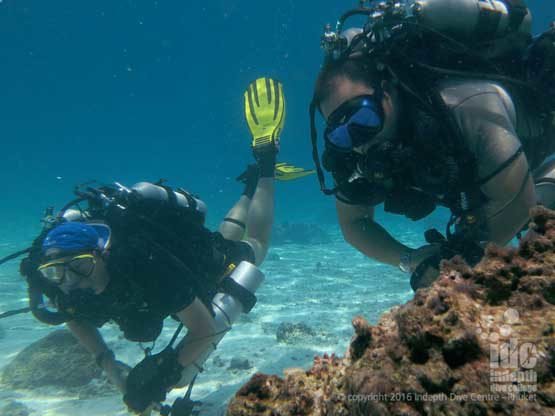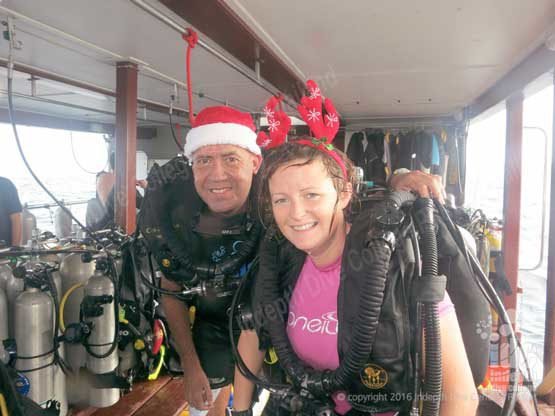Rebreather Diving Explained
The first questions people ask when we start talking about rebreather diving are usually “What is a Rebreather?” “How does a Rebreather Work?” and “Why do you dive on a Rebreather?”


The very word “rebreather” seems to conjure up images of the classic “Deep, Dark, Dangerous.” In fact, going back 25 years this is what the general public thought of recreational scuba diving. Other common misconceptions about Rebreathers are: Rebreather diving is a “Male only” Sport. It's complicated, Technical, heavy, and difficult. In today’s day and age and with the type of rebreathers (Fully Closed Circuit CCR and Semi-Closed SCR) that we have now. These misconceptions of diving with a rebreather could not be much further from the truth!
To get you started on understanding the main differences that rebreathers can bring you. You will first need to know the differences between Open Circuit, the traditional scuba diving equipment, and rebreather units.
How do rebreathers work?
When diving with “Open Circuit” (OC) the process is extremely simple. You have a large tank of air on your back which provides you with a breathing gas, usually air. Then you breathe this gas via a regulator 1st and 2nd stage.When you breathe out, the gas (air), goes straight out of the regulator and into the water and rises to the surface as bubbles. You then take your next breath and exhale the gas into the water etc.
When rebreather diving it is different. What the Rebreather does is simply recycle your air. So when rebreather diving you exhale the gas goes “back into the loop.” NO gas goes back into the water. The exhaled gas passes through a “scrubber” which absorbs the carbon dioxide (CO2) in the exhaled breath. This then turns it into a breathable mixture again. If the oxygen content is too low then an on-board computer (eCCR) adds 100% oxygen into gas mix in the loop. This once again turns it a breathable gas. The gas goes round and round resulting in no-bubbles and no noise as there are no bubbles. Bubbles make noise and scare away marine life. Rebreather diving also gives you long no decompression dive times compared to OC.
This is why Rebreather Divers tend to use 3 Lit tanks not 12 lit ones as we simply do not need that much gas.
You have a Nitrox / EANx Blending station on your back!
When diving on eCCR, the rebreather is constantly mixing oxygen and air to give you the optimal EANx mixture throughout the whole dive. The display gives you your current Partial Pressure of Oxygen (PPO2 / PO2) in 'the loop." Or to explain it even more simply the amount of oxygen in your breathing gas. When rebreather diving you can expect all the usual dive computer information on your display as well. Such as your maximum dive time, depth, tank pressure and all the other information you expect to know during any recreational dive.
Rebreather diving equipment types
There are basically two types of rebreathers that you are likely to encounter when rebreather diving nowadays. Semi-Closed Rebreathers where some of the exhaled gas is recycled and some goes into the water. And Closed Circuit Rebreathers where all the gas is recycled.
For the PADI Rebreather and Advanced Rebreather Courses we teach the Poseidon Se7en / MKVI Closed Circuit Rebreather.
Traditionally fully-closed Rebreathers were pretty much exclusively used by Technical / Military / Commercial divers. They required a lot of preparation, dive planning and skills to use them. Rebreather Diving with the development of modern, state of the art CCR rebreather units this is no longer the case. Rebreather units such as such as the Poseidon MKVI and Poseidon Se7en CCR. These were the world’s first “recreational rebreathers” by the way. Today It is now possible for recreational divers to easily and safely enjoy rebreather diving on fully-closed circuit CCR rebreathers. Anyone can enjoy the awesome advantages that rebreather diving offers!
Advantages of Diving Rebreathers include:
- 3 hour no-decompression dives
- You are breathing warm air which has come from your lungs so you stay warmer longer
- No bubbles. You get much closer marine life interaction to the point where you are almost invisible
- Dive time not limited by depth! Pretty much the same dive time whether you are or 10m or 20m
- Dive time unaffected by excursion! You can hardly move the whole dive or swim head-on into a current and it’s not really going to affect your dive time.
- Truly weightless in the water! No gas leaves the loop so no going "up and down" when breathing in and out
- Easy and simple to dive and maintain
- A normal 12 litre dive tank has it's weight firmly down the centre of your back. Rebreather equipment spreads the load across your back and is lightweight in comparison.
- If diving on Helium (He) then way, way cheaper as you use a fraction of what you would on OC.
- For decompression dives you can accelerate decompression and reduce deco gasses and tanks
All in all diving in rebreathers is a totally different scuba diving experience which is HIGHLY ADDICTIVE !
BE WARNED: We found that once used to rebreather diving there is no way back to onto normal Open Circuit ...






